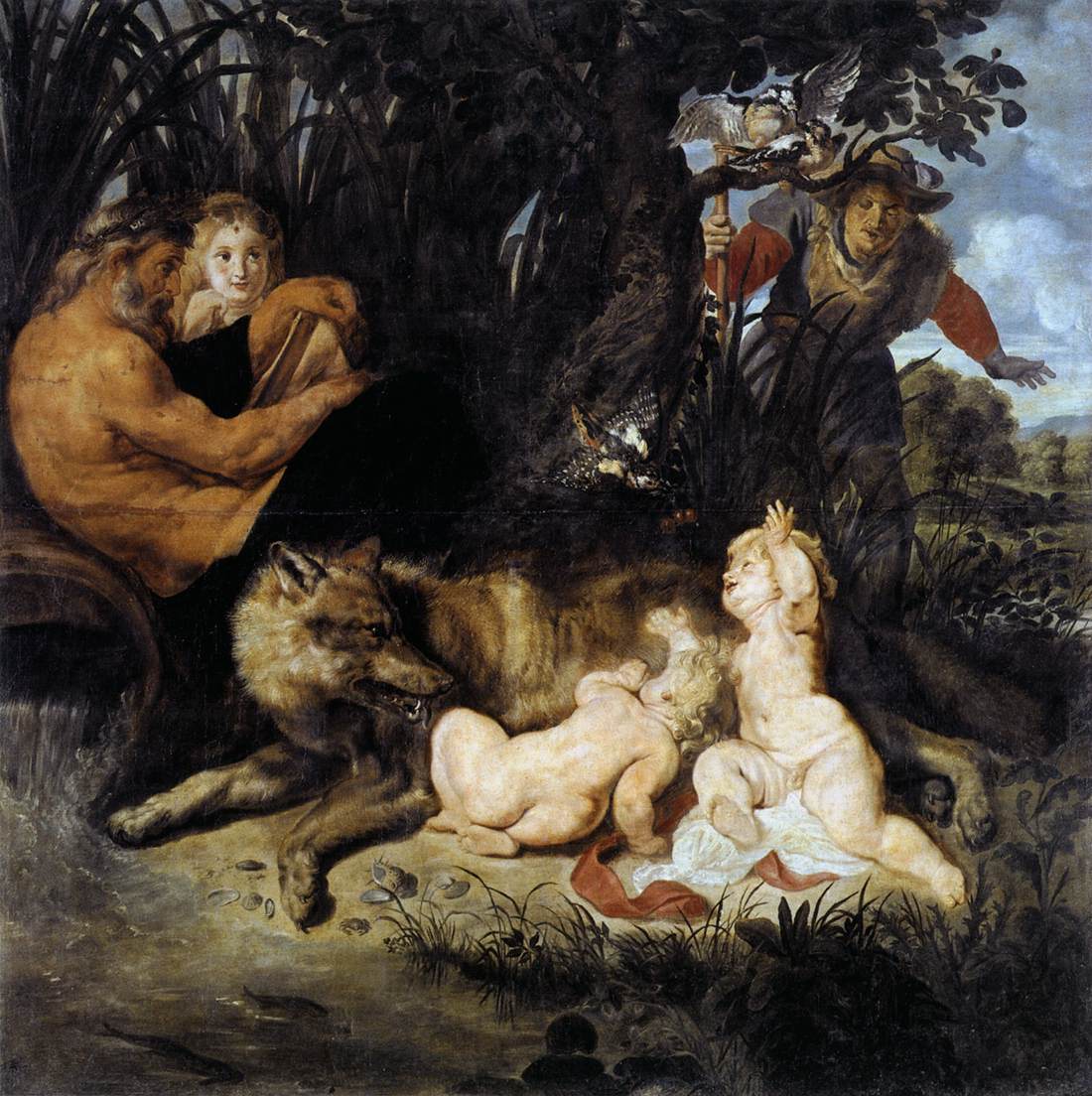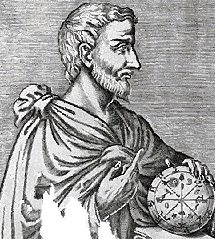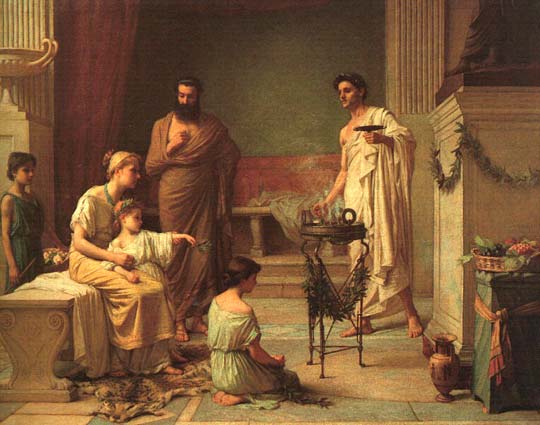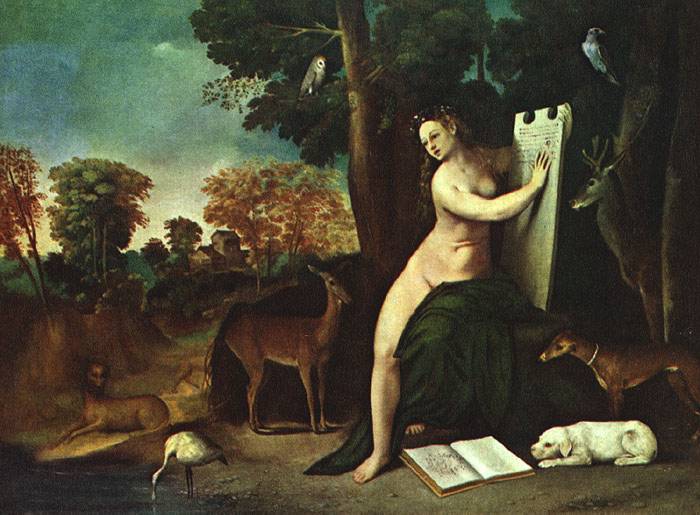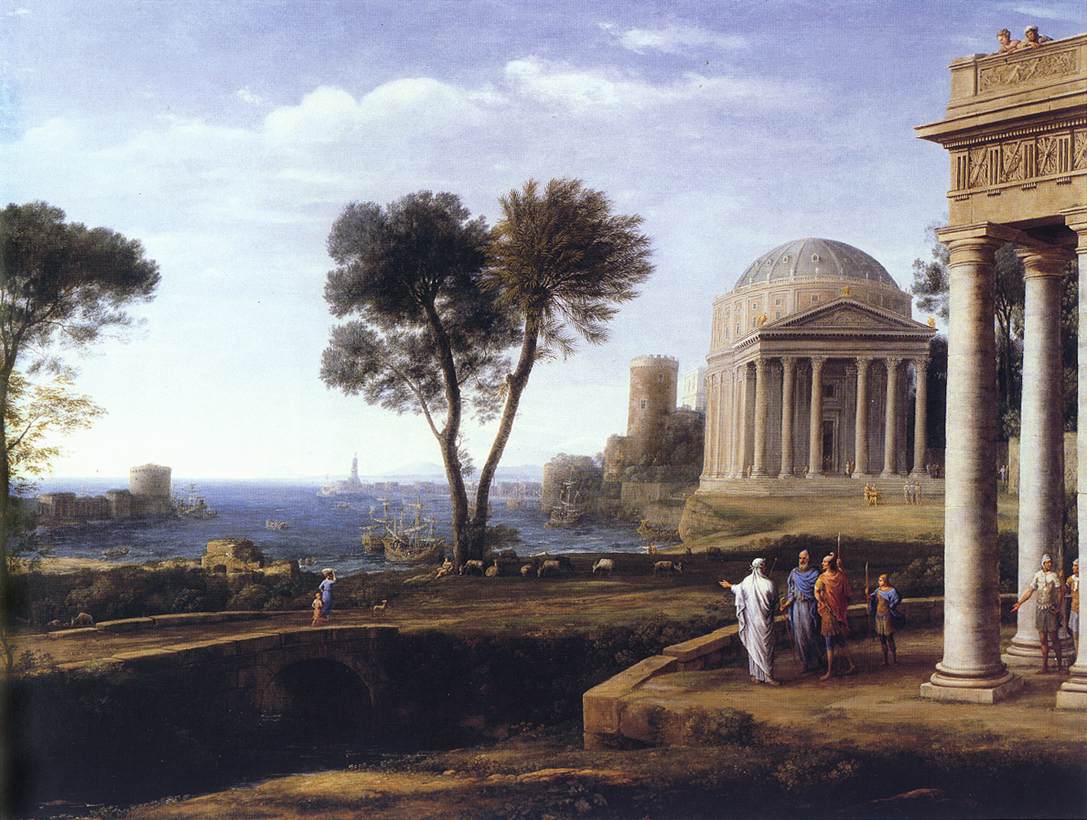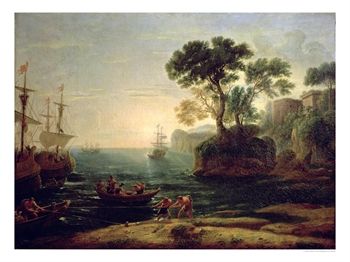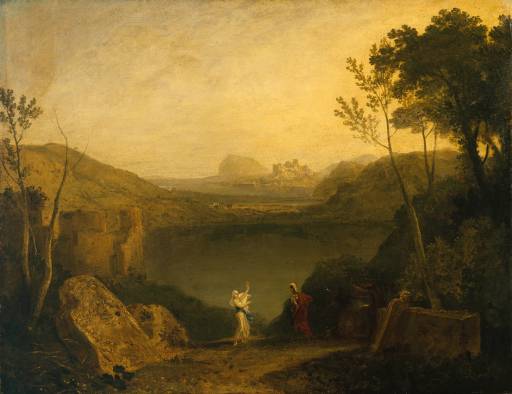"We can keep from a child all knowledge of earlier myths, but we cannot take from him the need for mythology." -Jung
And here we are at the end of the class and semester. And after the rebirth of the year, we will begin another. It seems appropriate, seeing as of today I have completed another year of this voyage termed life. Another birthday where a chapter closes and a new one begins. It also seems apt that it comes in the "dead" of winter.
This ritual "death" of a class is less than a month away from the spring renewal. The cycle begins again, just as any other cycle. Except now, we are equipped with a knowledge of our origins and myths.
As I wrote and digested Henderson, I really came away thinking how closely intertwined the beginnings and the ends really are. Death is not a reason for mourning but rather a step in the cycle. How a body is in life, affected by the elements, the natural, the tasks it undergoes, the house it lives in; so it is the same in death. As I work in my nursing home, we have one of the most fatal months that I remember, losing five of my friends to old age.
Within me lives the memory of those who passed. Their myth, intertwined with my own. Their origins becoming a part of mine.
And the cycle renews. I am greeted with the news just a week and a half ago of a birth in the family. Even my daughter finds power in these origins. She constantly wants to "visit the old people" and sits on my lap content to listen to the stories of Ovid and others for hours, even though her 3 year old mind struggles to comprehend them. "Why does it turn to gold?" "Echo, echo, echo!" she says. The recapitulation comes full circle as Henderson's did when he took the lion cub and befriended the infant on the plane. Could this possibly be "for the first time"?
Mythology
Thursday, December 9, 2010
Final Thoughts
I felt like I could have written more blogs, but spent a great deal of time inundated with the rich artwork of the Renaissance and other periods. One of my favorites turns out to be John William Waterhouse, who is more contemporary (1849-1917) but truly captures some of the Renaissance style. I felt like the pictures were extremely powerful and attempted to convey the third dimension which is not captured alone in the writings. I noticed, sadly, how there was a sharp decline in mythological artwork at the beginning of the 20th century. I guess this is partly a byproduct of the splintering of media sources but there certainly is a decline of actual paintings and sketches of mythological works. There are certainly a few exceptions: Picasso, Dali, Beckmann, Matisse, and Warhol (though very few Ovid ones occurred from any one of these artists). Perhaps I am more of a sucker for the old stuff, I guess.
Another interesting thing I came across while searching for different pictures which related to each story was that often times the scientific names of different families or orders of birds and plants were directly named from there Ovid counterpart. This is a nice renewal of the myths in the modern world.
Another interesting thing I came across while searching for different pictures which related to each story was that often times the scientific names of different families or orders of birds and plants were directly named from there Ovid counterpart. This is a nice renewal of the myths in the modern world.
Images of Metamorphoses XV
Metamorphoses XV
"Would you, dear daughter, alone, change fate, which never can be altered? All you need do is visit the three Sisters; in their own home you'll find the massive archive of all the world: those tablets, made of brass and tough iron, have no fear of lightning's wrath or heaven's tremors; and they can withstand - secure, eternal - any other shock. There you will find the fate of your descendants engraved on metal - indestructible." -Jove
This excerpt from the last chapter I liked because it tied in nicely with the theme of my paper, and somewhat into what I feel really applied from the readings. Jove is instructing his daughter to learn from her descendants. He says the origins are written in metal to be preserved and remembered. They are secure and indestructible. In the power of these origins might we learn and find our own power. Although fate cannot be altered, we can look to the past for guidance in the future.
The really interesting question ingrained in this excerpt is, is destiny changeable? It appears even the gods are subject to the decrees of the Fates, but is this separate from the fate Ovid is writing about here? Fate as a thing of the past controlled by the Sisters, but fate, the future as Ovid discusses it here?
This excerpt from the last chapter I liked because it tied in nicely with the theme of my paper, and somewhat into what I feel really applied from the readings. Jove is instructing his daughter to learn from her descendants. He says the origins are written in metal to be preserved and remembered. They are secure and indestructible. In the power of these origins might we learn and find our own power. Although fate cannot be altered, we can look to the past for guidance in the future.
The really interesting question ingrained in this excerpt is, is destiny changeable? It appears even the gods are subject to the decrees of the Fates, but is this separate from the fate Ovid is writing about here? Fate as a thing of the past controlled by the Sisters, but fate, the future as Ovid discusses it here?
Metamorphoses XIV
"And Circe, before we left, warned us how treacherous our paths might be, how vast the ocean was, what dangers wait along the savage sea. Her words - I must confess - filled me with fright; and when we reached this beach, I stayed behind." -Macareus
In essence, he was scared off.
His blabber did not stop until the tree-bark cloaking him climbed up around his neck: he's now a tree, in fact.
Another example of tree metamorphosis.
But then Cybele called to mind that all this timber came from her own pines; and so the Mother of the gods, with brazen cymbals, clanging loud and harsh, and with her brash and blatant boxwood flutes, filled all the sky; drawn through the light air by her team of harnessed lions, she outcried: "O Turnus, with your sacrilegious hands you fling - in vain - those torches! I shall save these ships; I'll not permit the greedy flames to burn these pines - these parts, these very limbs - of my own forests."
In essence, he was scared off.
His blabber did not stop until the tree-bark cloaking him climbed up around his neck: he's now a tree, in fact.
Another example of tree metamorphosis.
But then Cybele called to mind that all this timber came from her own pines; and so the Mother of the gods, with brazen cymbals, clanging loud and harsh, and with her brash and blatant boxwood flutes, filled all the sky; drawn through the light air by her team of harnessed lions, she outcried: "O Turnus, with your sacrilegious hands you fling - in vain - those torches! I shall save these ships; I'll not permit the greedy flames to burn these pines - these parts, these very limbs - of my own forests."
Images of Metamorphoses XIV
Wednesday, December 8, 2010
Images of Metamorphoses XIII
Subscribe to:
Posts (Atom)



